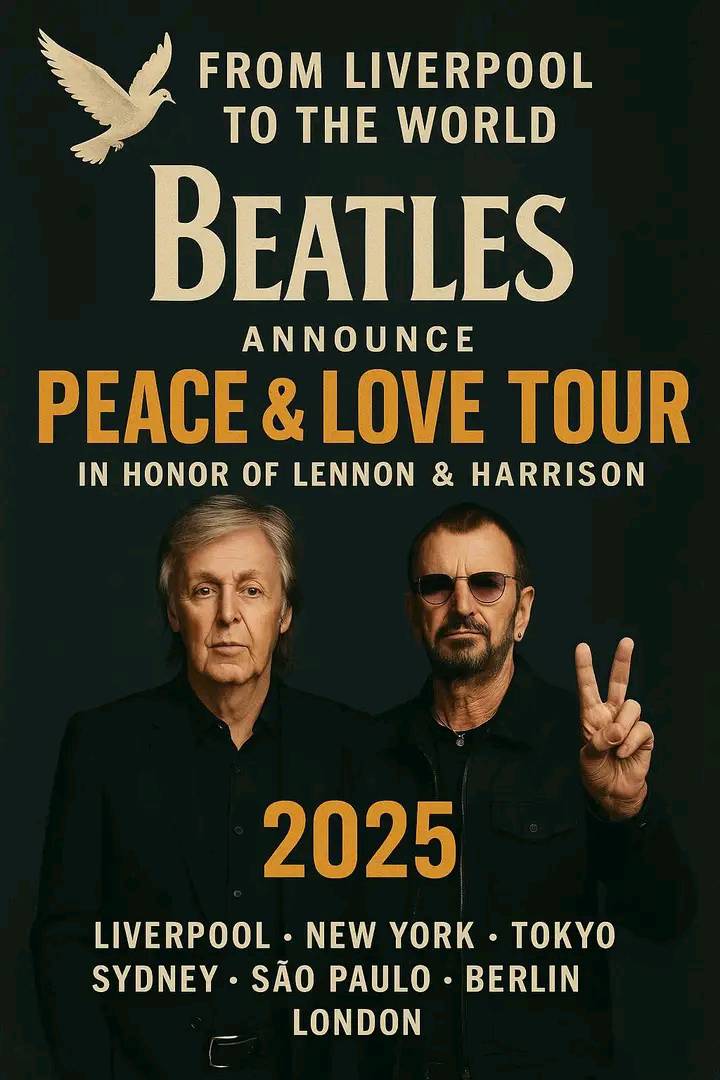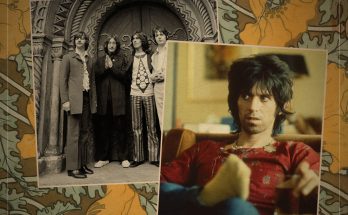mutating, evolving—and when the right people plug in and let it rip, it still has the power to unite, to thrill, to transform.

When Guns N’ Roses Legends and Rock Royalty Lit Up “Come Together”
Sometimes, rock and roll gives you a night that feels ripped from a dream—a moment so electric, so real and raw, it carves itself into your memory the second it starts. That’s exactly what happened when three Guns N’ Roses legends—Slash, Matt Sorum, and Gilby Clarke—took the stage together to unleash a cover of The Beatles’ “Come Together” that felt less like a tribute and more like a resurrection.
The crowd was already buzzing with anticipation. Any time Slash walks onstage, you know you’re in for something visceral, something with weight. Add in Matt Sorum—drummer for the Use Your Illusion era and the engine behind so many thunderous live performances—and Gilby Clarke, whose guitar work kept the GN’R fire burning in the ‘90s, and you’ve got a trio loaded with history and chemistry. But this wasn’t just a Guns N’ Roses nostalgia trip. It was a full-force collision of legacy, power, and fresh energy.
From the first riff, the groove was undeniable. That iconic bassline, reimagined through Slash’s blues-drenched tone and Clarke’s rhythm crunch, immediately gripped the room. Sorum’s drumming locked in, tight and swaggering, striking a balance between reverence for Ringo’s original feel and his own signature punch. It wasn’t just technically flawless—it was alive. You could feel the pulse of classic rock’s heart beating through the speakers.
And then the vocals hit.
Lzzy Hale, frontwoman of Halestorm and one of the fiercest voices in modern rock, stepped up to the mic like she owned it—because in that moment, she absolutely did. Her voice didn’t just carry the lyrics; it commanded them. Her delivery was raw and gritty, channeling soul, rebellion, and pure fire in equal measure. She gave the song new edges, pushing it beyond familiar territory into something wild and freshly unhinged.
Sharing vocal duties was Linda Perry, a powerhouse in her own right. With her raspy, emotional phrasing, she brought texture and tension to the verses, weaving beautifully with Hale’s explosiveness. Together, they didn’t reinterpret “Come Together”—they detonated it. The song became a vessel for something urgent and primal, a celebration of rock’s unfiltered spirit.
But then came the moment—the one that lifted the roof off.
At 1:52, Lzzy Hale let out a scream that cut through the air like lightning. It wasn’t performative. It wasn’t rehearsed. It was pure instinct, the sound of someone ripping open their chest and letting it all pour out. The audience reacted instantly. You could feel it like a wave: jaws dropped, fists went up, people screamed back in cathartic joy. That scream wasn’t just a highlight—it was a release, a spark that lit up everyone in the room.
And Slash? He knew exactly what to do with that energy.
He launched into a guitar solo that was equal parts muscle and melody—no effects trickery, no overblown theatrics, just raw feel. His Les Paul tone—warm, biting, unmistakable—cut through with surgical precision. He bent notes like they were alive, wringing emotion from every phrase. It was vintage Slash: expressive, dynamic, and effortless. Each note told its own story, rising and falling like waves of memory and passion. You didn’t need to see his face to know he was in it. It was written all over the way he played—how he leaned into the groove, how he let the solo breathe.
This wasn’t some over-produced, plastic performance meant for viral moments or corporate festivals. It was real. Gritty. Loose in the best way. You could feel the sweat, the heat, the shared love of music between legends and newer voices alike. It felt like a jam session between friends who just happened to be icons.
Beyond the technical skill and star power, what made the performance so unforgettable was its spirit. It captured something that’s become increasingly rare in today’s digital, over-sanitized music world: danger. That edge-of-chaos feeling, like anything could happen, like the whole thing might collapse—or explode into something transcendent. This was one of those nights when the walls between generations and genres came crashing down, when everyone—from lifelong Beatles fans to grizzled rockers to young Halestorm devotees—could lose themselves in the music.
The song’s message—“Come together, right now”—suddenly felt more than just a lyric. It was a mission. A gathering of musical tribes. A reminder that rock and roll isn’t dead, buried, or locked in the past. It’s alive, mutating, evolving—and when the right people plug in and let it rip, it still has the power to unite, to thrill, to transform.By the time the final notes rang out, the audience wasn’t just cheering. They were roaring. Not out of polite applause, but because something in them had been shaken loose. They’d just witnessed a fusion of legends and rebels channeling the timeless force of music in its rawest form.
In an era dominated by backing tracks, pre-set lights, and safe performances, this rendition of “Come Together” stood out like a flare in the dark. It wasn’t about ego or precision. It was about energy. Passion. Connection. It reminded everyone why rock still matters—not as a genre, but as a feeling.
And for one night, it all came together—past, present, and future—under the banner of that one immortal groove.L
et me know if you want a headline for publication, a YouTube description version, or a breakdown for social media snippets!



